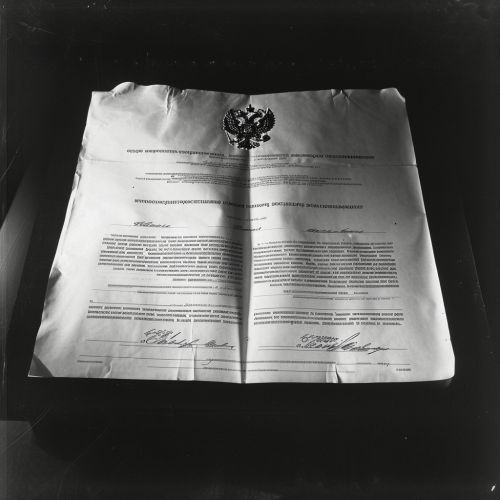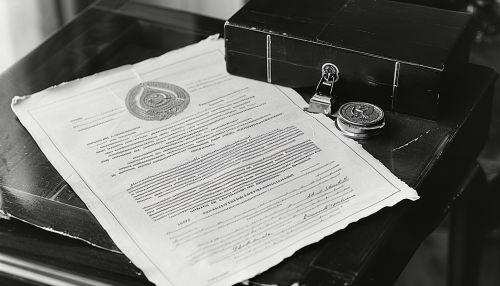1936 Soviet Constitution
Background
The 1936 Soviet Constitution, officially known as the Constitution of the Union of Soviet Socialist Republics, was adopted on December 5, 1936. It was the second constitution recognized by the Soviet Union and was championed by Joseph Stalin. It was a significant departure from the previous 1918 Soviet Constitution, marking a shift in Soviet political and social structure.


Drafting and Adoption
The drafting of the 1936 Soviet Constitution was a comprehensive process that involved extensive discussions and debates within the Soviet leadership. The draft was presented to the 7th Congress of Soviets in February 1935, and the final version was adopted by the Extraordinary 8th Congress of Soviets on December 5, 1936. The new constitution was seen as a step towards the legal consolidation of the socialist state and was hailed as the "most democratic constitution in the world".
Key Provisions
The 1936 Soviet Constitution was divided into eleven chapters and 137 articles, which outlined the political, social, and economic structure of the Soviet Union. It declared the USSR a socialist state of workers and peasants and affirmed the leading role of the Communist Party in the Soviet state.
Political Structure
The constitution established the Supreme Soviet as the highest state body, replacing the Congress of Soviets. The Supreme Soviet was divided into two chambers: the Soviet of the Union, which represented the union republics, and the Soviet of Nationalities, which represented the nationalities of the USSR. The Presidium of the Supreme Soviet was the collective head of state.
Social and Economic Rights
The constitution guaranteed a wide range of social and economic rights, including the right to work, rest and leisure, health protection, care in old age and sickness, housing, education, and cultural benefits. It also proclaimed the principle of socialist property, which included state, cooperative, and personal property.
Civil and Political Rights
The constitution also provided for civil and political rights, such as freedom of speech, press, assembly, and religious beliefs. However, these rights were subject to the condition that they did not be used to the detriment of the socialist system.
Implementation and Impact
Despite the democratic principles outlined in the 1936 Soviet Constitution, its implementation was often at odds with the realities of the Soviet state. While the constitution guaranteed a range of rights and freedoms, these were frequently curtailed in practice. The constitution's declaration of the USSR as a socialist state also served to legitimize the one-party rule of the Communist Party.
The 1936 Soviet Constitution had a significant impact on the structure and functioning of the Soviet state. It served as a model for the constitutions of other socialist states and influenced the development of constitutional law in the Soviet Union and beyond.
Amendments and Revisions
The 1936 Soviet Constitution underwent several amendments and revisions during its existence. The most significant changes were made in 1944, when the structure of the Supreme Soviet was altered, and in 1977, when a new constitution, known as the Brezhnev Constitution, was adopted.
Legacy
The 1936 Soviet Constitution remains a significant document in the history of the Soviet Union. Despite its contradictions and the gap between its principles and their implementation, it represented a key moment in the legal and political development of the Soviet state. Its legacy continues to be debated by historians and legal scholars.
